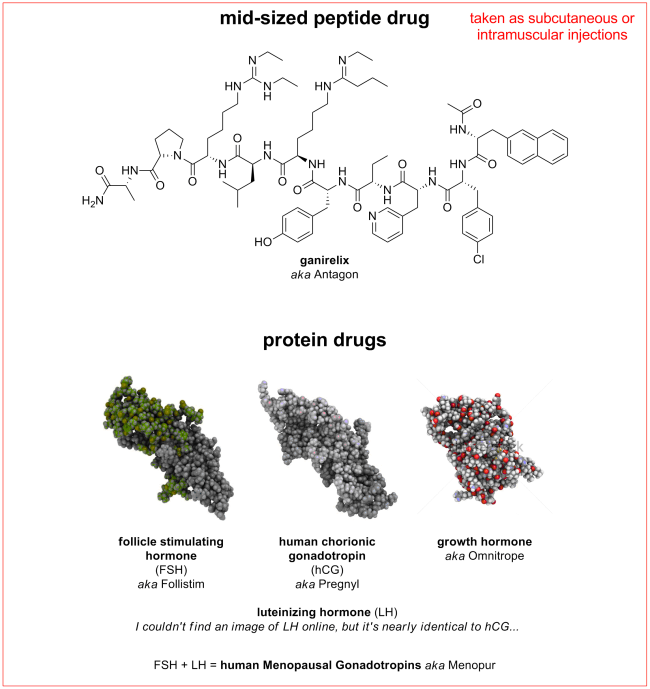But first, I want to apologize for the radio silence. It started because I was so busy with the start of the school year…
- We traveled to Chicago Labor Day weekend (8/31-9/2) for a good friend’s wedding. (I got my positive OPK there, so, once again, our plans for natural cycle IUI were foiled…)
- Fall classes started that Wednesday (9/4).
- My promotion portfolio was due Friday (9/6).
- Then on Saturday (9/7), I flew to Indianapolis for a whirlwind trip the American Chemical Society meeting.
- Then back Monday (9/9) to teach the second week of classes…
And then on Friday (9/13), I found myself…
a little bit.
pregnant.
As most of you know, I’ve been diagnosed with diminished ovarian reserve (AMH 0.19, FSH 13). I was a poor responder in both menopur + IUI and low-stim + IVF cycles. We were told by three different doctors that our chances of success with my eggs were slim.
We spent the last couple months doing (well, intending to do…) natural cycle IUI and taking a laundry list of supplements in the hope that they might improve egg quality, in preparation for a ‘last ditch’ high-stim IVF cycle at CCRM.
We had our CCRM phone consult a couple weeks ago, and scheduled our one day workup for this coming Tuesday (9/24).
As most of you also know, I’m a religious BBT charter. As a result, I know that I have a short luteal phase (usually only 10 days or so). When I got to 11, 12, 13dpo without a temperature drop (and noticed that my boobs were almost filling the cups of my bra…), I started to hope. Then a week ago Friday, I caved and used an old home pregnancy test I had lying around.
It was positive.
I called Dr. Y’s office and the advice nurse ordered a blood test.
- Beta #1 (at 13dpo) was 110.
Then on Saturday, the spotting started. Red at first, then brown. On Sunday my BBT dropped half a degree and we just knew that we were miscarrying again. That morning I also realized that I had somehow FORGOTTEN to use the progesterone suppositories that the nurse told me to use when I called on Friday!! (You have no idea how completely out of character it is for me to ‘forget’ instructions from my healthcare provider…especially about something this important!!!) So I cried in bed for over an hour on Sunday, reading and rereading supportive comments on the online forum for my local Resolve support group, sure that I had killed our miracle baby with my thoughtlessness.
But I went in on Monday for Beta#2.
- Beta #2 (at 16dpo) was 380.
I continued spotting for six days, but I kept going in for blood tests.
- Beta #3 (at 18dpo) was 980.
- Beta #4 (at 21dpo) was 3512.
Thankfully, the spotting seems to have stopped for now.
So now I’m feeling a bunch of things:
1) Elated. This is what we’ve been praying for the past 19 months. What we paid about $12K for so far, with nothing to show for it. What we were prepared to shell out another $25-30K more for at CCRM… And somehow we hit the jackpot ‘the old-fashioned way’?!
2) Terrified. Last time we got a BFP (nearly a year and a half ago), we miscarried at 9 weeks after seeing no heartbeat at our 8 week ultrasound. We were sad, but that was just the start of our infertility journey. At the time we were so sure that we would be pregnant again in a month or two. We’ve had a roller coaster year of infertility, a DOR diagnosis, a life-threatening injury, and two failed ART cycles since then. I can only imagine what a miscarriage would be like now that we know what is at stake… We are so far from out of the woods, and I’m really scared.
3) Embarrassed. I know it sounds really stupid, but I feel like a big fat infertility fraud. Like all the wonderful people I’ve met through this journey will resent me. (I could hardly blame them, as I’ve resented my share of pregnant women.) I feel bad for even saying that I feel this way. I’m sure you’re all like “Boo hoo for the poor pregnant girl.” But it’s weird. Infertility has become a part of my identity somehow. If this pregnancy sticks, does that part of me just die?
So we canceled the trip to Colorado. (Well, for fear of jinxing it, I waited until Beta #2, and used the word “postpone” rather than “cancel” when I called CCRM…)
Our first ultrasound is on Friday.
We are cautiously hopeful…
*******
To our friends IRL, I’m sorry that you’re hearing our news for the first time like this. Given our history and how early it is in the pregnancy (just 5 weeks today), we’re not ready to share far and wide yet… But I didn’t want to leave you hanging! C & I would appreciate your discretion for now.





